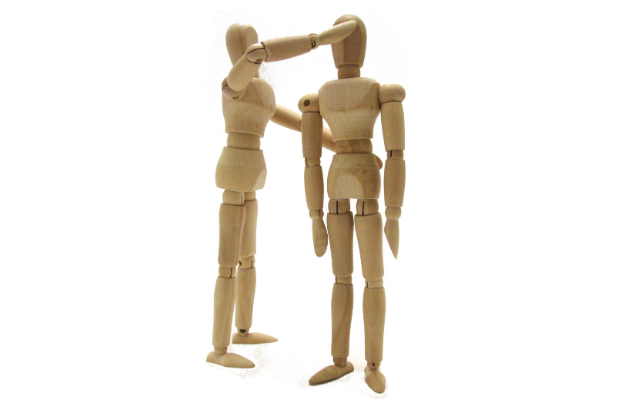
By David Cork, Osteopath
Many of us were brought up with the old adage “sit/stand up straight, shoulders back”. But does current research and evidence support this view? What exactly does “good” posture mean? A recent paper called “Sit up Straight”: Time to Re-evaluate aims to dispel the myths about posture.
Below you will learn;
- Is there a correct posture?
- What are the common posture myths?
- What can you do to help your body feel great!
What we see in the clinic
Patients often tell us they have “bad” posture and that their pain is due to sitting, standing or moving “incorrectly”. However, a recent paper published in the Journal of Orthopaedic & Sports Physical Therapy, found that there is NO single ‘correct’ posture.
Common posture myths:
- There is no evidence that one optimal posture exists, or that avoiding “incorrect” posture will prevent back or neck pain.
- Differences in posture are normal and can change due to your mood. Body shapes -including the spinal curve- naturally vary. Often people attribute normal variations of human anatomy to causing their pain, however, there is no evidence to support this. In addition, posture often reflects our state of mind or body image. Whether we are happy, sad, scared, hot, cold, nervous or in pain significantly alters our posture; if you are sore on your right side you may lean to the left; if you are happy you may stand up straighter; if you are sad you may slump – this does not mean your posture is not “normal”!
- It is safe to adopt more comfortable postures. Comfortable postures vary between individuals. Exploring different postures, including those frequently avoided, and changing habitual postures, may provide symptomatic relief.
- Sitting is not dangerous. Sitting for greater than 30 minutes in one position is NOT dangerous. However, moving and changing positions regularly can be helpful and being physically active is very important to your health.
- One size does not fit all. Postural and movement screening does not prevent pain! For example, preferred lifting techniques are influenced by the natural variation between people’s bodies; advice to adopt a specific posture or to brace the core is not evidence-based.
What can you do to improve pain and feel great?
Your spine is a robust, adaptable structure, that is capable of safely moving and loading in a variety of postures. Common warnings to protect the spine may not be evidence-informed and can often lead to unwarranted fear of movement, or fear of damage, both of which are correlated with more pain and greater disability.
Instead of worrying about your posture and trying to find the perfect position, try to move your body more and stay physically active. Your body is designed to move and its ability to work properly relied on movement. Experiment with different postures when sitting and standing and see what positions feel comfortable for you. Focus on doing more of the active things you enjoy, and do them with confidence. As we always say in the clinic, the more you move, the faster you heal, the better you feel. After all, happiness can be reflected in your posture!
Do you have more questions or need help with your pain?
Come and see one of our experienced practitioners and have all your questions answered. We are here to help you get back on track and to start feeling better as fast as possible.
Click here to start feeling great again!

